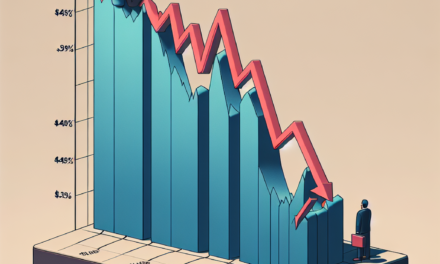“Mastering the Market: Your Guide to Securing the Best Mortgage Deal Amidst High Rates!”
Introduction
As the housing market continues to grapple with elevated mortgage rates, prospective homebuyers and those looking to refinance face unique challenges in securing favorable financing options. On January 12, 2025, navigating these high mortgage rates requires strategic planning and informed decision-making. This guide offers essential tips and insights to help you effectively maneuver through the complexities of the current lending landscape, ensuring you can secure a great deal despite the prevailing economic conditions. From understanding market trends to exploring alternative financing options, these strategies will empower you to make sound financial choices in your homebuying journey.
Understanding High Mortgage Rates: What You Need to Know
As we enter 2025, the landscape of mortgage rates presents both challenges and opportunities for prospective homebuyers. Understanding high mortgage rates is crucial for anyone looking to secure a favorable deal in this environment. High mortgage rates can significantly impact monthly payments and overall affordability, making it essential to grasp the underlying factors that contribute to these elevated rates.
To begin with, it is important to recognize that mortgage rates are influenced by a variety of economic indicators, including inflation, employment rates, and the overall health of the economy. When inflation rises, central banks often respond by increasing interest rates to stabilize the economy. Consequently, this can lead to higher mortgage rates, as lenders adjust their offerings to account for the increased cost of borrowing. Therefore, staying informed about economic trends can provide valuable insights into potential fluctuations in mortgage rates.
Moreover, the Federal Reserve plays a pivotal role in shaping the mortgage rate environment. Their monetary policy decisions, particularly regarding the federal funds rate, can have a direct impact on mortgage rates. When the Fed raises rates, it typically leads to an increase in mortgage rates as lenders pass on the higher costs to consumers. Conversely, when the Fed lowers rates, it can create a more favorable borrowing environment. Thus, monitoring the Fed’s actions and statements can help prospective buyers anticipate changes in mortgage rates.
In addition to macroeconomic factors, individual financial circumstances also play a significant role in determining the mortgage rate a borrower may receive. Lenders assess various elements, including credit scores, debt-to-income ratios, and down payment amounts, to evaluate the risk associated with lending to a particular borrower. A higher credit score, for instance, can lead to more favorable mortgage rates, as it indicates a lower risk of default. Therefore, potential homebuyers should prioritize improving their credit profiles before applying for a mortgage, as this can lead to substantial savings over the life of the loan.
Furthermore, it is essential to consider the type of mortgage product being pursued. Fixed-rate mortgages, while offering stability in monthly payments, may come with higher initial rates compared to adjustable-rate mortgages (ARMs). ARMs typically start with lower rates that can adjust over time, which may be appealing in a high-rate environment. However, borrowers should carefully evaluate their long-term plans and risk tolerance before opting for an ARM, as future rate adjustments can lead to increased payments.
In light of these considerations, prospective homebuyers should also explore various lenders and mortgage products to find the best deal. Shopping around can yield significant differences in rates and terms, as lenders may have varying criteria and offerings. Additionally, working with a knowledgeable mortgage broker can provide access to a broader range of options and help navigate the complexities of the mortgage market.
Ultimately, while high mortgage rates may pose challenges, they also present an opportunity for informed buyers to secure favorable terms. By understanding the factors that influence mortgage rates, improving personal financial profiles, and exploring diverse lending options, prospective homebuyers can position themselves to make sound financial decisions. As the market continues to evolve, staying informed and proactive will be key to successfully navigating the complexities of securing a mortgage in 2025.
Strategies for Improving Your Credit Score Before Applying
As prospective homebuyers prepare to navigate the complexities of high mortgage rates, one of the most critical factors influencing their ability to secure favorable loan terms is their credit score. A strong credit score not only enhances the likelihood of loan approval but also opens the door to lower interest rates, which can significantly reduce the overall cost of homeownership. Therefore, it is essential to adopt effective strategies for improving your credit score before applying for a mortgage.
To begin with, understanding the components that contribute to your credit score is vital. Credit scores are typically calculated based on several factors, including payment history, credit utilization, length of credit history, types of credit accounts, and recent inquiries. By focusing on these areas, you can take actionable steps to enhance your creditworthiness. For instance, ensuring that all bills are paid on time is paramount. Late payments can have a detrimental effect on your score, so setting up automatic payments or reminders can help you stay on track.
In addition to timely payments, managing your credit utilization ratio is crucial. This ratio reflects the amount of credit you are using compared to your total available credit. Ideally, you should aim to keep your utilization below 30%. If you find that you are nearing this threshold, consider paying down existing balances or requesting a credit limit increase from your creditors. By doing so, you can improve your utilization ratio, which can positively impact your credit score.
Moreover, reviewing your credit report for errors is an essential step in the credit improvement process. Mistakes on your credit report can lead to an inaccurate assessment of your creditworthiness. Therefore, it is advisable to obtain a free copy of your credit report from the major credit bureaus and scrutinize it for any discrepancies. If you identify errors, promptly dispute them with the credit bureau to ensure that your report accurately reflects your financial behavior.
Furthermore, diversifying your credit mix can also contribute to a higher credit score. Credit scoring models favor individuals who have experience managing different types of credit, such as revolving credit cards and installment loans. If you currently have only one type of credit, consider responsibly opening a new account to enhance your credit mix. However, it is essential to approach this strategy with caution, as opening too many accounts in a short period can lead to hard inquiries that may temporarily lower your score.
In addition to these strategies, maintaining a long credit history is beneficial. The length of your credit history accounts for a portion of your credit score, so keeping older accounts open, even if they are not frequently used, can positively influence your score. Closing old accounts may seem tempting, especially if they carry annual fees, but doing so can shorten your credit history and potentially lower your score.
Lastly, it is important to be patient and consistent in your efforts to improve your credit score. Significant changes may take time, but by implementing these strategies and monitoring your progress, you can position yourself favorably when the time comes to apply for a mortgage. As you work towards enhancing your creditworthiness, remember that a higher credit score can lead to better mortgage options, ultimately making your homeownership journey more affordable and sustainable. By taking these proactive steps, you can navigate the challenges of high mortgage rates with greater confidence and secure a great deal when the opportunity arises.
Comparing Lenders: Finding the Best Mortgage Rates
In the current economic landscape, where high mortgage rates have become a significant concern for potential homebuyers, comparing lenders is an essential step in securing the best possible deal. As of January 12, 2025, the mortgage market presents a myriad of options, making it crucial for borrowers to conduct thorough research to identify the most favorable terms. The first step in this process involves understanding the various types of lenders available, including traditional banks, credit unions, and online mortgage companies. Each of these entities offers distinct advantages and disadvantages, which can influence the overall cost of borrowing.
When comparing lenders, it is vital to look beyond the advertised interest rates. While a lower rate may seem appealing at first glance, it is equally important to consider the associated fees and closing costs. Lenders often present their rates in a way that may not reflect the total cost of the loan. Therefore, obtaining a Loan Estimate from each lender can provide a clearer picture of the overall expenses involved. This document outlines not only the interest rate but also the annual percentage rate (APR), which includes fees and other costs, allowing borrowers to make more informed comparisons.
Moreover, it is essential to evaluate the lender’s reputation and customer service. Reading reviews and seeking recommendations from friends or family can provide insights into the experiences of other borrowers. A lender with a strong track record of customer satisfaction may offer a smoother application process and better support throughout the loan term. Additionally, responsiveness and transparency during the initial stages of communication can be indicative of the level of service one can expect throughout the mortgage process.
In addition to assessing rates and customer service, potential borrowers should also inquire about the lender’s flexibility regarding loan terms. Some lenders may offer adjustable-rate mortgages (ARMs) that can provide lower initial rates, while others may focus on fixed-rate options. Understanding the implications of each type of mortgage is crucial, as it can significantly impact long-term financial stability. For instance, while an ARM may offer short-term savings, it could lead to higher payments in the future if interest rates rise.
Furthermore, it is advisable to consider the lender’s willingness to negotiate. Many borrowers are unaware that mortgage rates and terms are often negotiable. Engaging in discussions with multiple lenders can create leverage, allowing borrowers to secure better terms. Additionally, presenting a strong financial profile, including a good credit score and a stable income, can enhance one’s bargaining position.
As borrowers navigate the complexities of high mortgage rates, it is also beneficial to stay informed about market trends. Economic indicators, such as inflation rates and Federal Reserve policies, can influence mortgage rates significantly. By keeping abreast of these developments, borrowers can time their applications strategically, potentially securing a more favorable rate.
In conclusion, comparing lenders is a multifaceted process that requires careful consideration of various factors beyond just interest rates. By evaluating fees, customer service, loan flexibility, and the potential for negotiation, borrowers can position themselves to secure a mortgage that aligns with their financial goals. As the market continues to evolve, staying informed and proactive will be key to navigating high mortgage rates effectively. Ultimately, a well-researched approach will empower borrowers to make confident decisions in their home-buying journey.
The Importance of a Large Down Payment in a High-Rate Environment
In a high mortgage rate environment, the significance of a large down payment cannot be overstated. As prospective homebuyers face elevated interest rates, the financial landscape becomes increasingly challenging, making it essential to explore strategies that can mitigate the impact of these rates. One of the most effective approaches is to increase the size of the down payment. By doing so, buyers can not only reduce their overall loan amount but also enhance their chances of securing favorable loan terms.
When mortgage rates are high, the cost of borrowing escalates, leading to higher monthly payments. A larger down payment directly addresses this issue by lowering the principal amount borrowed. For instance, if a buyer is looking at a home priced at $400,000, a 20% down payment of $80,000 would result in a loan of $320,000. Conversely, a smaller down payment of 10% would increase the loan amount to $360,000, resulting in significantly higher monthly payments. This difference can be particularly burdensome in a high-rate environment, where even a slight increase in the loan amount can lead to substantial additional costs over the life of the loan.
Moreover, a larger down payment can also influence the interest rate offered by lenders. In many cases, lenders view buyers who can make a significant down payment as less risky. This perception can lead to more favorable loan terms, including lower interest rates. Consequently, by demonstrating financial stability and commitment through a larger down payment, buyers may find themselves in a better position to negotiate with lenders. This is particularly important in a market characterized by high rates, where every basis point can have a meaningful impact on the total cost of the mortgage.
In addition to reducing monthly payments and potentially securing a lower interest rate, a larger down payment can also help buyers avoid private mortgage insurance (PMI). PMI is typically required when a buyer puts down less than 20% of the home’s purchase price. This insurance can add hundreds of dollars to monthly payments, further straining budgets in a high-rate environment. By making a larger down payment, buyers can eliminate this additional cost, thereby enhancing their overall financial situation.
Furthermore, a substantial down payment can provide buyers with greater equity in their homes from the outset. This equity can serve as a financial cushion, offering homeowners more flexibility in managing their finances. In times of economic uncertainty or fluctuating property values, having a solid equity position can be invaluable. It not only provides a buffer against market downturns but also opens up opportunities for future borrowing or refinancing options.
In conclusion, as homebuyers navigate the complexities of a high mortgage rate environment, the importance of a large down payment becomes increasingly clear. By reducing the loan amount, potentially lowering interest rates, avoiding PMI, and building equity, a larger down payment can significantly enhance a buyer’s financial standing. Therefore, prospective homeowners should prioritize saving for a substantial down payment as part of their overall strategy for securing a favorable mortgage deal. In doing so, they can better position themselves to weather the challenges posed by high mortgage rates and achieve their homeownership goals with greater confidence and financial security.
Fixed vs. Adjustable-Rate Mortgages: Which is Right for You?
When considering a mortgage, one of the most critical decisions borrowers face is choosing between a fixed-rate mortgage and an adjustable-rate mortgage (ARM). Each option has its unique advantages and disadvantages, making it essential for potential homeowners to understand the nuances of both before making a commitment. As of January 12, 2025, with high mortgage rates influencing the housing market, this decision becomes even more significant.
Fixed-rate mortgages offer stability and predictability, as the interest rate remains constant throughout the life of the loan. This means that monthly payments will not fluctuate, allowing homeowners to budget effectively over the long term. For individuals who plan to stay in their homes for an extended period, a fixed-rate mortgage can provide peace of mind, especially in a rising interest rate environment. Knowing that their rate will not increase can be particularly reassuring when economic conditions are uncertain. Furthermore, fixed-rate mortgages are often viewed as a safer option, as they shield borrowers from potential market volatility.
On the other hand, adjustable-rate mortgages can present an attractive alternative for those who may not intend to stay in their homes for more than a few years. ARMs typically start with a lower initial interest rate compared to fixed-rate mortgages, which can result in lower monthly payments during the initial period. This can be particularly appealing for first-time homebuyers or those looking to maximize their purchasing power in a high-rate environment. However, it is crucial to understand that after the initial fixed period, the interest rate on an ARM can adjust based on market conditions, potentially leading to significantly higher payments in the future.
When deciding between these two options, it is essential to consider personal financial circumstances and long-term goals. For instance, if a borrower anticipates moving within a few years, an ARM may be more cost-effective, allowing them to take advantage of lower initial rates. Conversely, if stability and long-term planning are priorities, a fixed-rate mortgage may be the better choice. Additionally, potential homeowners should evaluate their risk tolerance. Those who are comfortable with the possibility of fluctuating payments may find ARMs appealing, while those who prefer certainty may lean towards fixed-rate options.
Moreover, it is vital to assess the current economic landscape and interest rate trends. As of early 2025, with mortgage rates remaining high, borrowers should be cautious about locking into an ARM without fully understanding the implications of future rate adjustments. It is advisable to review the terms of any adjustable-rate mortgage carefully, paying close attention to the adjustment periods and caps on rate increases. This knowledge can help borrowers make informed decisions that align with their financial strategies.
In conclusion, the choice between a fixed-rate mortgage and an adjustable-rate mortgage hinges on individual circumstances, preferences, and market conditions. By weighing the benefits and drawbacks of each option, potential homeowners can navigate the complexities of the mortgage landscape more effectively. Ultimately, understanding one’s financial situation and long-term goals will guide borrowers toward the most suitable mortgage type, ensuring they secure a deal that aligns with their needs in a challenging economic environment.
Timing Your Purchase: When to Lock in a Rate
As prospective homebuyers navigate the complexities of the real estate market, understanding the timing of mortgage rate locks becomes crucial, especially in a climate characterized by fluctuating interest rates. The decision to lock in a mortgage rate can significantly impact the overall cost of a home, making it essential to approach this aspect with careful consideration. In the current environment, where high mortgage rates are prevalent, timing your purchase effectively can lead to substantial savings.
To begin with, it is important to recognize that mortgage rates are influenced by a variety of factors, including economic indicators, inflation, and the Federal Reserve’s monetary policy. Consequently, these rates can change frequently, sometimes even within a single day. Therefore, staying informed about market trends is vital. Monitoring economic news and reports can provide insights into potential rate movements, allowing buyers to make more informed decisions about when to lock in a rate.
Moreover, understanding the concept of rate locks is essential. A rate lock is an agreement between a borrower and a lender that guarantees a specific interest rate for a set period, typically ranging from 30 to 60 days. This can be particularly advantageous in a rising rate environment, as it protects the borrower from potential increases during the home-buying process. However, it is equally important to be aware of the expiration of the lock period. If the purchase process extends beyond the lock period, borrowers may face the risk of having to secure a new rate, which could be higher than the original lock.
In addition to monitoring market trends and understanding rate locks, timing your purchase strategically can also involve considering seasonal fluctuations in the housing market. Historically, the real estate market tends to slow down during the winter months, which can lead to less competition among buyers. This seasonal dip may provide opportunities to negotiate better terms with sellers, potentially offsetting the impact of higher mortgage rates. Therefore, if you are considering a purchase in January, it may be beneficial to take advantage of this quieter period.
Furthermore, engaging with a knowledgeable mortgage broker can provide invaluable assistance in navigating the complexities of rate locks and timing. A broker can offer insights into the best times to lock in a rate based on current market conditions and can help identify lenders that may offer more favorable terms. Additionally, they can assist in understanding the nuances of different loan products, which can further enhance your ability to secure a great deal.
As you approach the decision to lock in a mortgage rate, it is also prudent to evaluate your personal financial situation. Factors such as credit score, debt-to-income ratio, and overall financial stability can influence the rates you are offered. By improving your financial profile before applying for a mortgage, you may be able to secure a more favorable rate, even in a high-rate environment.
In conclusion, successfully navigating high mortgage rates requires a combination of market awareness, strategic timing, and personal financial readiness. By staying informed about economic trends, understanding the mechanics of rate locks, and considering seasonal market dynamics, homebuyers can position themselves to secure a favorable mortgage rate. Ultimately, the key lies in being proactive and informed, ensuring that when the right opportunity arises, you are ready to act decisively.
Utilizing Government Programs to Offset High Mortgage Rates
As prospective homebuyers face the challenge of high mortgage rates, it becomes increasingly important to explore various avenues that can help mitigate these costs. One effective strategy is to utilize government programs designed to assist individuals in securing favorable mortgage terms. These programs not only provide financial relief but also offer valuable resources that can enhance the overall homebuying experience. By understanding and leveraging these options, buyers can navigate the complexities of the current market more effectively.
To begin with, the Federal Housing Administration (FHA) loan program is a prominent option for those looking to purchase a home in a high-rate environment. FHA loans are particularly appealing due to their lower down payment requirements and more lenient credit score criteria. This makes them an excellent choice for first-time homebuyers or those with less-than-perfect credit. By opting for an FHA loan, buyers can reduce their initial financial burden, allowing them to allocate more funds toward monthly mortgage payments, even in a high-rate scenario.
In addition to FHA loans, the U.S. Department of Veterans Affairs (VA) offers a unique opportunity for eligible veterans and active-duty service members. VA loans come with several advantages, including no down payment and no private mortgage insurance (PMI) requirements. This can significantly lower the overall cost of homeownership, making it easier for veterans to secure a mortgage despite prevailing high rates. Furthermore, VA loans often feature competitive interest rates, which can further alleviate the financial strain associated with elevated mortgage costs.
Another noteworthy program is the USDA Rural Development loan, which is designed to promote homeownership in rural and suburban areas. This program provides zero down payment options and competitive interest rates, making it an attractive choice for those looking to buy in eligible regions. By taking advantage of USDA loans, buyers can not only save on upfront costs but also benefit from lower monthly payments, thereby offsetting the impact of high mortgage rates.
Moreover, state and local housing finance agencies frequently offer various assistance programs aimed at helping homebuyers. These programs may include down payment assistance, closing cost assistance, or even grants for first-time buyers. By researching and applying for these local initiatives, buyers can access additional financial support that can make a significant difference in their overall affordability. It is essential for prospective homeowners to stay informed about the specific programs available in their area, as these can vary widely and may provide crucial assistance in a challenging market.
In addition to these government-backed programs, buyers should also consider the potential for rate buydowns. This strategy involves paying upfront points to lower the interest rate on a mortgage. While this requires an initial investment, it can lead to substantial savings over the life of the loan, particularly in a high-rate environment. By combining this approach with government programs, buyers can create a comprehensive strategy that maximizes their financial benefits.
Ultimately, navigating high mortgage rates requires a proactive approach and a willingness to explore all available options. By utilizing government programs, prospective homebuyers can significantly offset the financial challenges posed by elevated interest rates. Whether through FHA, VA, or USDA loans, or by tapping into local assistance programs, buyers can find pathways to homeownership that align with their financial goals. As the market continues to evolve, staying informed and adaptable will be key to securing a great deal in the face of rising mortgage costs.
Q&A
1. **Question:** What should I consider when shopping for a mortgage in a high-rate environment?
**Answer:** Focus on comparing different lenders, understanding the total cost of the loan, and looking for any special programs or incentives.
2. **Question:** How can I improve my chances of getting a lower mortgage rate?
**Answer:** Improve your credit score, reduce your debt-to-income ratio, and save for a larger down payment.
3. **Question:** Are there specific loan types that are better during high mortgage rates?
**Answer:** Consider adjustable-rate mortgages (ARMs) or government-backed loans like FHA or VA loans, which may offer more favorable terms.
4. **Question:** Should I consider refinancing if I already have a mortgage?
**Answer:** Yes, if you can secure a significantly lower rate or better terms, refinancing may be beneficial despite current high rates.
5. **Question:** What role does the economy play in mortgage rates?
**Answer:** Economic indicators such as inflation, employment rates, and Federal Reserve policies can influence mortgage rates significantly.
6. **Question:** How can I negotiate better terms with lenders?
**Answer:** Present your financial profile, shop around for offers, and be prepared to leverage competing quotes to negotiate.
7. **Question:** What are some common pitfalls to avoid when securing a mortgage in high-rate conditions?
**Answer:** Avoid rushing into a decision, overlooking hidden fees, and ignoring the importance of locking in a rate when favorable.
Conclusion
In conclusion, navigating high mortgage rates requires strategic planning and informed decision-making. Prospective homebuyers should focus on improving their credit scores, exploring various loan options, and considering adjustable-rate mortgages for potential savings. Additionally, working with experienced mortgage professionals and staying informed about market trends can help secure favorable terms. By being proactive and flexible, buyers can still find great deals even in a challenging interest rate environment.





